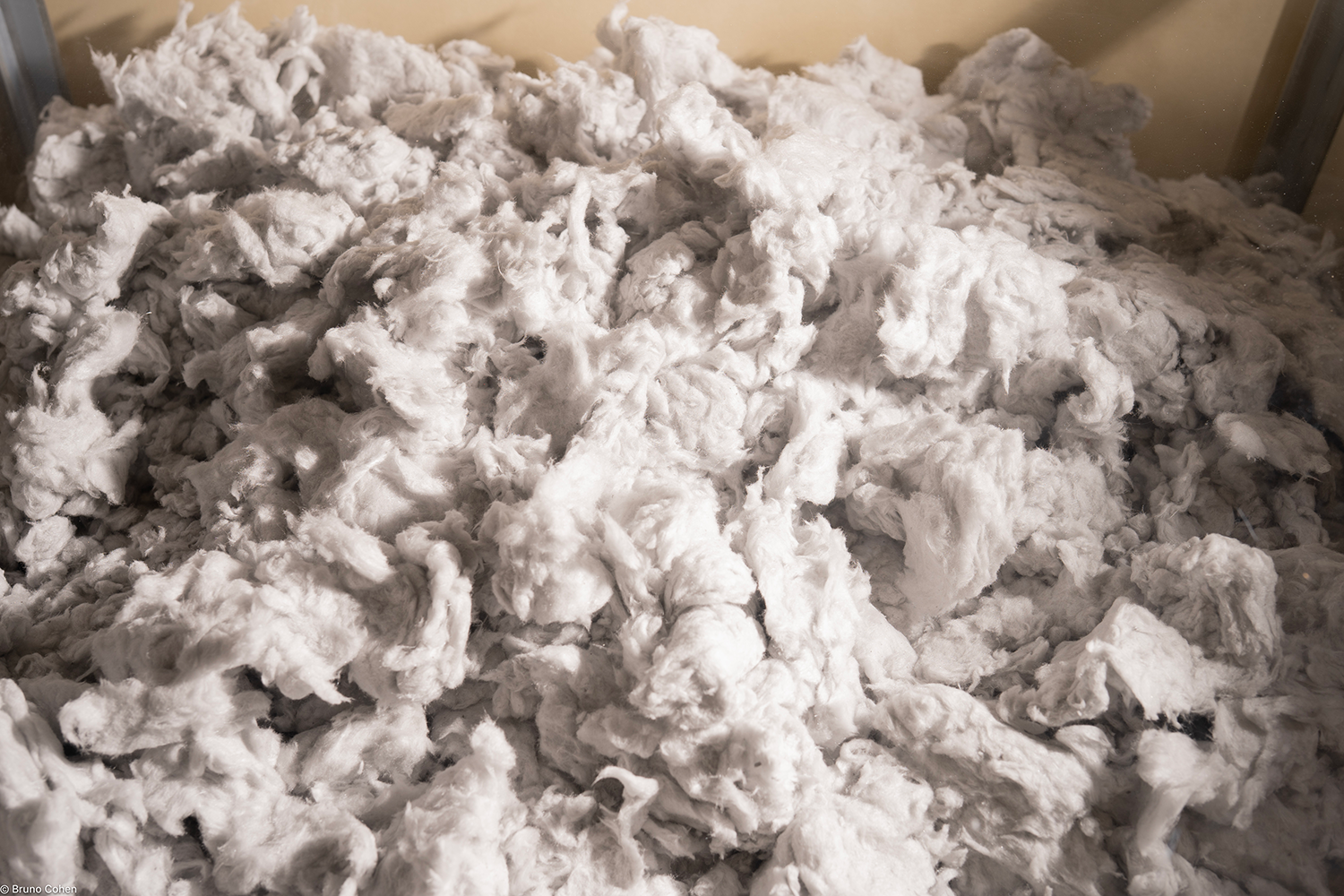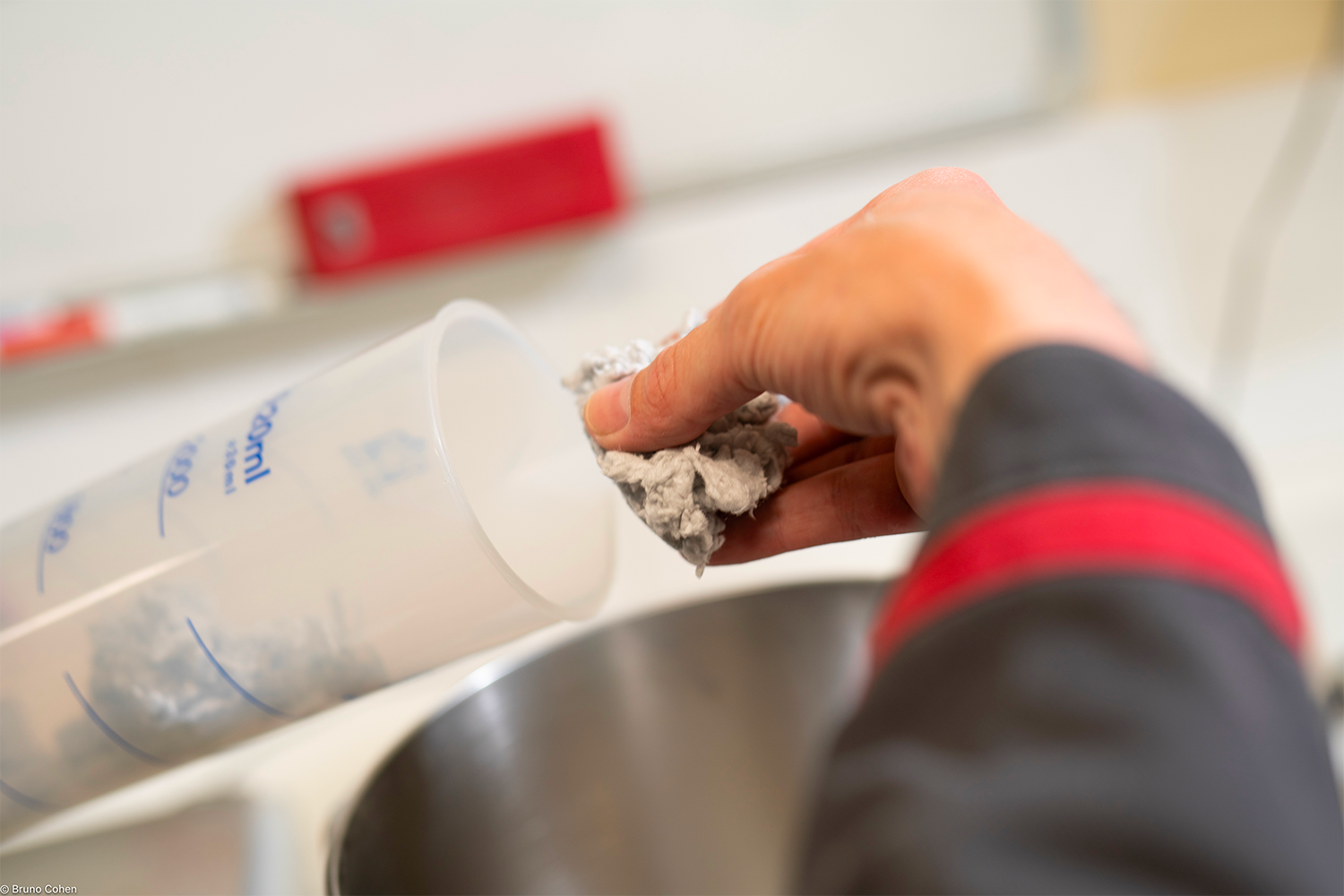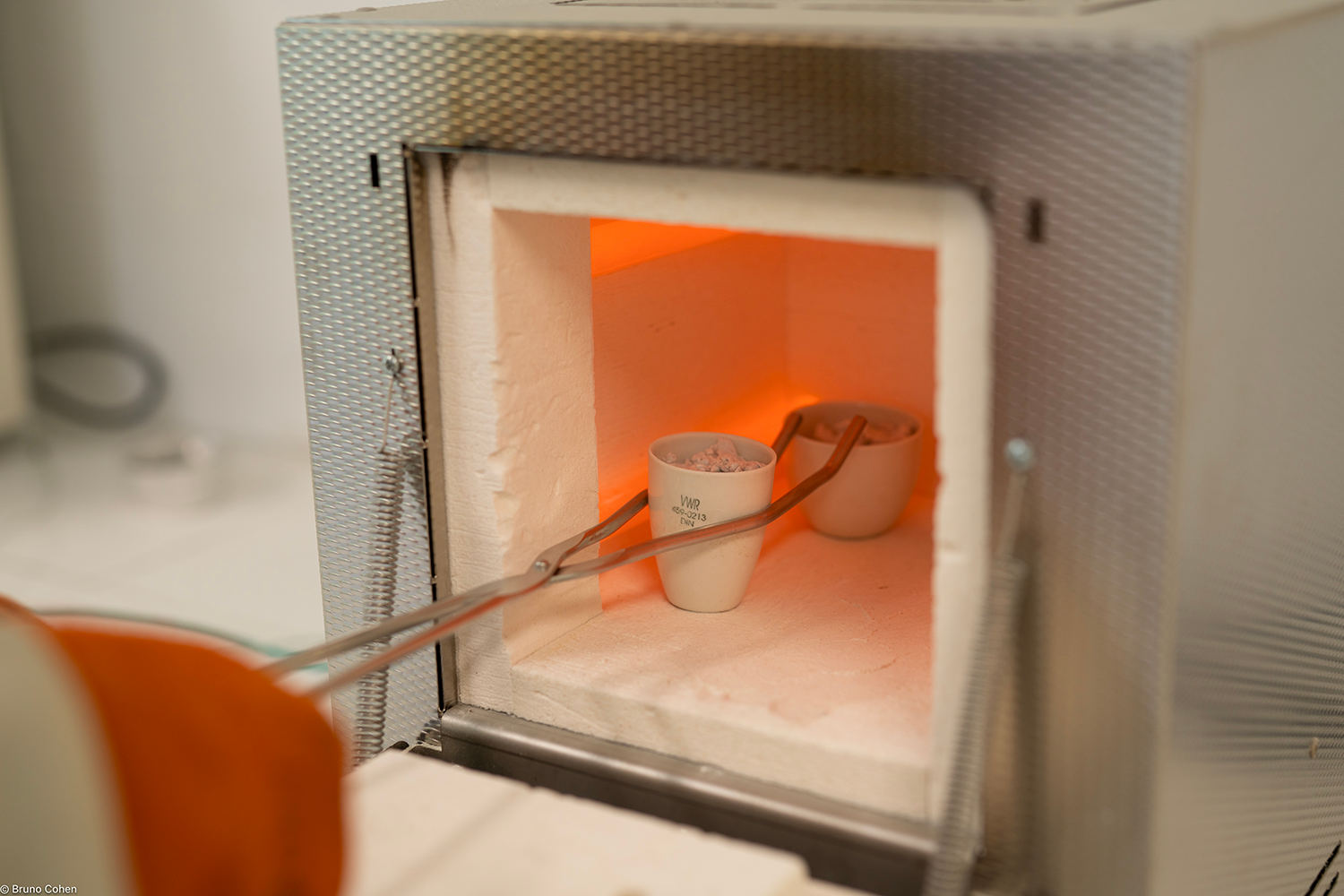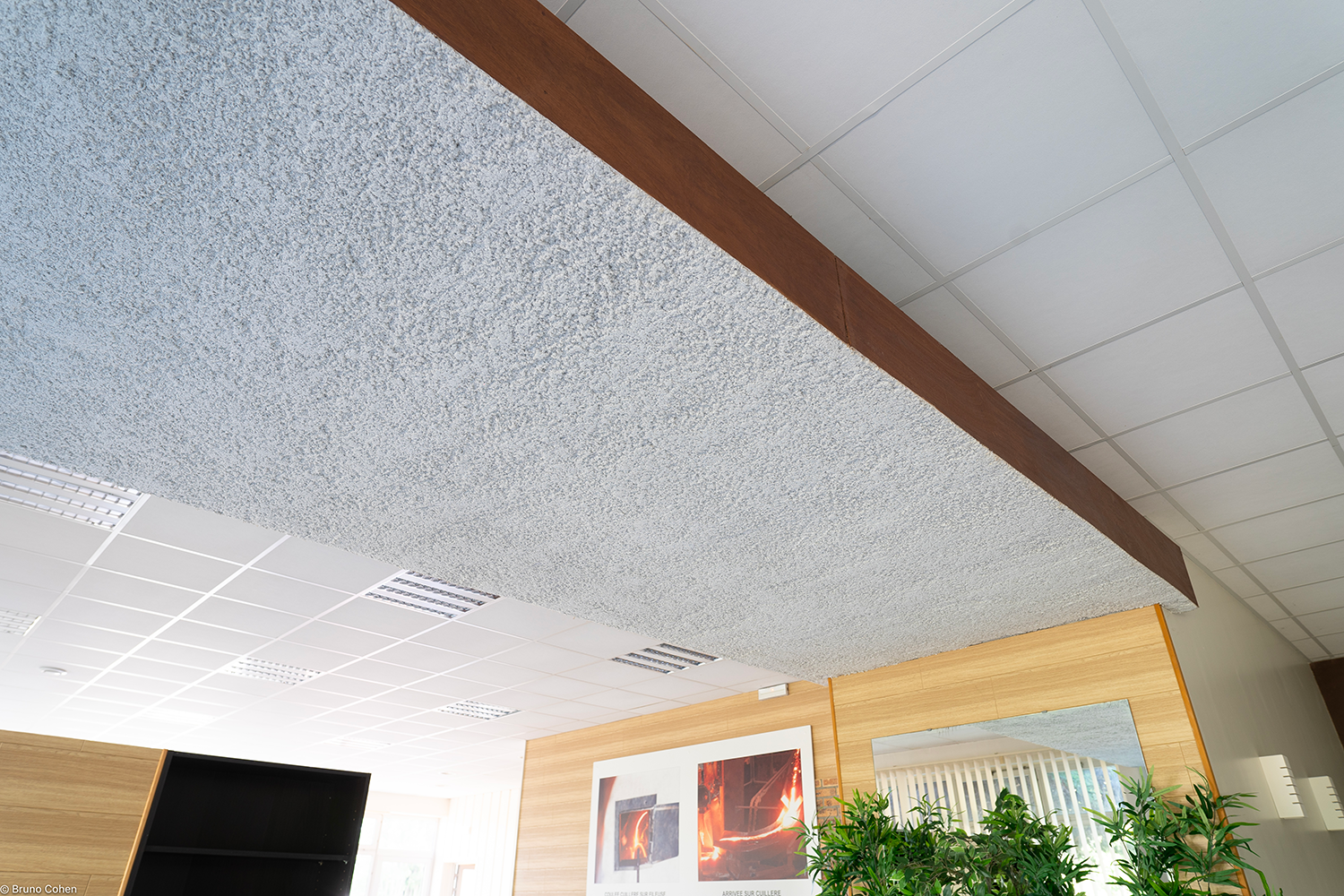
Acoustic absorbers and insulators are intended to limit the propagation of noise, inside the rooms in which the sound sources are located for the absorbers, outside these rooms for the insulators.
Mineral wools are thermal insulators and acoustic absorbers. they allow the performance of these complexes to be improved. Under certain conditions of implementation, they can themselves become acoustic insulators. They contribute to the search for acoustic comfort by reducing the transmission and reverberation of airborne noise.
Acoustic insulation with ISOTHERM sprayed on metal mesh

Improvement of the sound insulation performance of a support with the ISOTHERM projected onto a metal mesh fixed by points
Reinforcement of the acoustic insulation of a concrete wall is most often done by adding a complex consisting of an insulator (mineral wool for example) protected by a waterproof facing. A mass-spring-mass system is thus formed which has a natural resonance frequency at which there is a reduction in performance relative to that of the support but above which there is an increase in this performance. If this natural frequency is poorly located in the range of useful frequencies, the overall performance of the wall equipped with the reinforcement complex risks being reduced compared to that of the bare wall. The mineral wool projected directly onto the concrete also has a frequency resonance which can have an adverse effect.
If the wool is projected onto a metal mesh fixed at points to the concrete with the interposition of a kraft paper, the resonance frequency is badly "communicated" to the support, and there is little loss of insulation at this frequency. We then see an improvement in the performance of the medium at higher frequencies.
Designing acoustics without forgetting thermal regulations and fire safety avoids additional costs. Our ISOTHERM and ISOFLAM SM products meet these three requirements.

Sound absorption with ISOTHERM or ISOFLAM SM
Acoustic absorption contributes to the acoustic correction of the room in which the noise source is located. It makes it possible to reduce the reverberation of sounds in the room, whether it is, for example, a compressor room or a discotheque.
The absorption performance of a product is expressed in the form of an alpha Sabine absorption coefficient depending on the frequency of the sound or a weighted coefficient. The closer the value is to 1, the better the absorption.
The absorption coefficient of our ISOTHERM or ISOFLAM SM products in the frequency range from 100 to 5000Hz ranges from 0.08 in the low frequencies, to 1 in the medium or high frequencies.
This corresponds to a weighted absorption coefficient greater than or equal to 0.70, according to the NE EN ISO 354 standard, supplemented by the NF EN ISO 11654 standard.
Even if the laboratories give, for certain frequencies, results slightly higher than 1 (essentially due to the relevance of Sabine's formula, and possibly the edge effects of the sample tested), it is advisable to limit them to 1, because one cannot absorb more than you receive.






